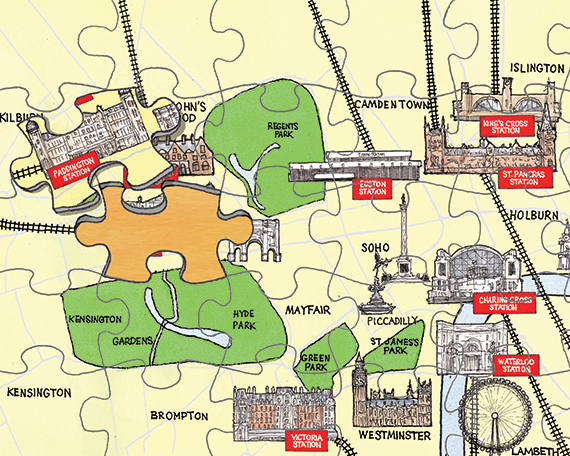
Did you know that Paddington was once called Tyburnia? And in the 19th century Thackeray described it as “the elegant, the prosperous, the polite Tyburnia, the most respectable district of the habitable globe”. Sadly, like most areas around major railway stations, because of their transient nature, gentility gave way to degraded public space, multi-occupied dwellings, poor maintenance and low-grade retail.
But in the modern city the role of stations in the urban fabric is changing, with demand for space close to good transport links at a premium. New development has been taking place around Paddington for nearly two decades. It got out of the blocks in the 1990s faster than King’s Cross, although King’s Cross has been more successful in creating a powerful brand and an impressive sense of place in a very short space of time.
Paddington was designated an opportunity area in the London Plan in 2008 and individual mixed-use schemes around the station make it the largest development area in Westminster. A lot has changed – except for the area north of Praed Street, where commuters and overseas visitors coming from Heathrow are welcomed by one of the scruffiest pieces of city as they emerge from the station. It’s a disgrace.
Then Irvine Sellar proposes a development that would fund £65m of transport infrastructure and much needed decent public space. OK, so the 72-storey “Paddington Pole” didn’t go down too well with local residents groups and Westminster City Council lost its nerve; OK, so high-end residential wasn’t really needed here. But Sellar went back to the drawing board – or his architect, Shard designer Renzo Piano, did – and came up with a scheme that was much lower and provided office and retail space.
For Paddington, Piano has designed a minimal cube, it doesn’t try to do too much, as perhaps the Pole did. Its critics complain it is out of scale with the area, but as development of the hospital site at last gets under way, and the area densifies, it will form a key entrance to a new urban quarter.
It is the right thing to do to develop this area more densely – the London Plan says that opportunity areas should deliver new development in areas of good public transport provision. It is the right thing to do to provide workspace that will deliver economic benefits to this area of deprivation just half a mile from Mayfair.
It is unrealistic to hope that the improvements that will be delivered by this scheme, which will make a massive difference to the daily experience of tens of thousands of passengers using the station, can be funded out of the public purse. CIL and section 106 are politicians’ preferred methods of taxation and we either live with them or our cities will suffer.
It is the right thing to do to build higher buildings in the Paddington Opportunity Area; there have been tall buildings here since the 1960s. But what we are missing is any sort of vision from Westminster City Council of what sort of place we are going to end up with. It is no wonder that local residents are concerned. The Cube is just one part of this huge urban jigsaw and the council should have a proper plan for the area to show how all the pieces fit together.
Peter Murrray is chairman of New London Architecture










